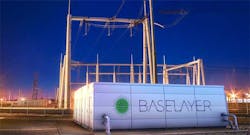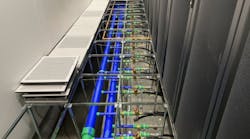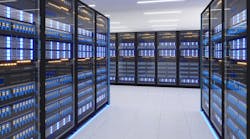Top 3 Considerations When Adding Data Center Capacity
In this this edition of “Voices of the Industry,” Samir Shah, Chief of Staff at BASELAYER, covers three of the top considerations when adding data center capacity.
Enterprises, Internet of Things (IoT) initiatives, and Smart Cities across the globe are continuously pushing for a modern data center infrastructure that optimizes resource utilization while still considering how data center capacity is delivered over time. To accomplish these goals, the early planning phases are the critical steps in which all key stakeholders have a chance to give input.
Samir Shah, Chief of Staff, BASELAYER
However, many of the key questions can often be overlooked during this critical phase. Often these oversights result in increased operational and capital expenses over the lifetime of the data center asset.
Over the years, as BASELAYER has supported the development of data centers and data center capacity for a wide breadth of projects. These projects have yielded valuable lessons that you can apply to the planning process wherever data centers are needed.
Strategic Partnerships
Once the data center capacity and requirements are identified, elements such as cost, security, sustainability, and scalability (future growth potential) should all be addressed as early as possible. It is essential for the design or construction firm to bring value added knowledge, processes, and partners to the table to ensure these critical areas are not ignored.
[clickToTweet tweet=”Elements such as cost, security, and scalability should all be addressed ASAP #Datacenter” quote=”Elements such as cost, security, sustainability, and scalability (future growth potential) should all be addressed as early as possible.”]
As an example, we have worked with firms who offer detailed infrastructure security processes which are integrated early in the design stage. We have seen how this approach leads to savings over time. The process prevents new security technologies from being added as an afterthought at a costly premium.
Operations & Maintenance
When customers identify the data center as a critical component of their project, often they are not sure how they will operate and/or maintain their asset over time to ensure high levels of end user satisfaction. With modular and edge deployments on the rise, the concern often becomes managing a portfolio of critical infrastructures across a wider geographic footprint.
Clients want a one stop shop – one phone number to call to get the answers they need and a data center product that is deployed no different than an infrastructure product (i.e. generator or chiller). Be prepared to align with the right experts who can provide an operations and maintenance option, and demand that your infrastructure providers have a strong track record of providing support services.
Analytics & Content
One last item to consider when preparing for a data center build is the analytics and telemetry generated across various assets. Ideally, end users should want their data center solution to be standardized and scalable across multiple sites. Having a solution that provides the user a clear view of the operating metrics is important, because it offers users more insights into the usage and performance of the data center itself. To enable the best result, data center projects need to consider the key analytics that drive successful data center management. Some of these key metrics to track could include system downtimes, resource consumption rates, and usage patterns, which enable quicker decisions on predicting outages, optimizing energy usage, and determining when to add IT load.
Ideally, end users should want their data center solution to be standardized and scalable across multiple sites.
To prepare a data center to track the right analytics, it is best to ensure both the network and the computing resources provide visibility to every transaction. This may require the deployment of sensors throughout the system to not only track those analytics, but to enhance and validate the data captured. Preparing for this level of detailed analytics will also require appropriate processing power to seamlessly consolidate the data and present it in a manner that facilitates quick decision making.
The main benefit of choosing to deploy a modern data center as a component of a major construction project is the ability to take advantage of the scalability, efficiencies, and decision making power inherent in the system. To maximize those benefits, experience shows that careful pre-planning is key. Through a carefully considered data center plan, created with the assistance of strategic partners, users will deploy a system that provides the service and support they need with the right level of analytic support to ensure usage is maximized.
Samir Shah serves as Chief of Staff at BASELAYER where he is responsible for strategic corporate initiatives, corporate brand/marketing, and Board/Investor relations. You can connect with Shah via LinkedIn.
BASELAYER Technology LLC, offers software-defined modular data center infrastructures that can be dynamically provisioned based on the needs of your application. Standardized, yet customizable, our goal is to revolutionize the performance of the data center through advanced modular technology, infrastructure management software and big data analytics.
This is was one of the most popular Voices of the Industry columns on Data Center Frontier this year so far. This article was originally published on Data Canter Frontier on February 13.


